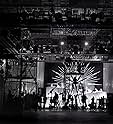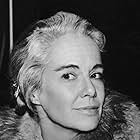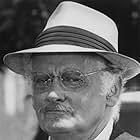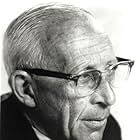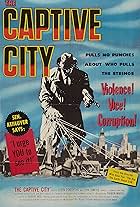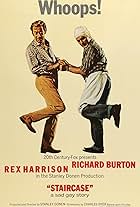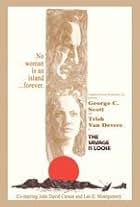VALUTAZIONE IMDb
6,4/10
1311
LA TUA VALUTAZIONE
Tre diversi generi cinematografici degli anni '30, tra film di boxe, drammi sull'aviazione della prima guerra mondiale e musical di Broadway dietro le quinte, la satira e usando lo stesso el... Leggi tuttoTre diversi generi cinematografici degli anni '30, tra film di boxe, drammi sull'aviazione della prima guerra mondiale e musical di Broadway dietro le quinte, la satira e usando lo stesso elenco.Tre diversi generi cinematografici degli anni '30, tra film di boxe, drammi sull'aviazione della prima guerra mondiale e musical di Broadway dietro le quinte, la satira e usando lo stesso elenco.
- Premi
- 3 vittorie e 10 candidature
Peter Stader
- Barney Keegle (segment "Dynamite Hands")
- (as Peter T. Stader)
Jimmy Lennon Sr.
- The Announcer (segment "Dynamite Hands")
- (as James Lennon)
Trama
Lo sapevi?
- QuizIn the original theatrical release, "Dynamite Hands" which was filmed in color, was printed in black and white. The home video version uses the original color footage. Contrary to rumors, the video version was not colorized.
- BlooperAssuming Baxter's Beauties of 1933 had actually been shot in 1933, it would have used two-strip Technicolor, also known as Red Technicolor because it is particularly good at photographing the red spectrum. This is shot in the three-strip process, or Blue Technicolor, which would not be introduced until 1935. Additionally, most musicals would not be shot completely in color until the 1940s.
- Citazioni
Joey Popchik: When a man says what's right, what's good, what's real, and what's true, then his mouth is ten feet tall.
- Curiosità sui creditiThe cast list in the closing credits is divided into two sections with headings Dynamite Hands and Baxter's Beauties of 1933.
- Versioni alternativeIn the theatrical and pay-tv release, the first half of "Movie, Movie" is in black and white, while both halves are often shown in color in commercial TV.
- Colonne sonoreOverture to Baxter's Beauties of 1933
Music by Ralph Burns and Buster Davis
Performed by Ralph Burns and the Orchestra
Recensione in evidenza
"Movie Movie" is one of the finest examples of deadpan spoofery to ever hit the big screen. In the same vein as the iconically deader-than-deadpan Leslie Nielsen in "Airplane!" except predating it by 2 years, here we get a buffet of fine dramatic actors like George C. Scott ("Patton"), Eli Wallach ("The Good, the Bad & the Ugly"), Harry Hamlin ("Clash of the Titans") plus fantastic stage legends like Ann Reinking ("All That Jazz") and Barry Bostwick ("Rocky Horror") all pouring their talents into a riotously absurd script. They do it so straight-faced that you'll probably miss at least 25% of the hilarious lines, and that's why this is such a great flick for repeat viewings.
Honestly, I found myself watching the entire film with my remote in hand so I could rewind and catch all the sneaky zingers that slipped past while I was still laughing at the last one. This is the kind of movie that you can quote endlessly to your friends until you have no friends left.
Some choice lines include:
(door knocking) "Oh! That must be the door."
or "It's been my lifelong dream! For years."
or "Can I walk you home?" "Sure, New York's a free country." (that one took me a while)
Played totally straight with no rim shots, laugh tracks or often without even a comedic beat, these gags truly put the tongue so firmly in cheek that you'd think you're at the dentist. George C. Scott, fresh off his Academy Award for playing the stone-hearted General Patton, is surprisingly perfect in this deadpan role as you might've guessed from his performance in "Dr Strangelove" 15 years earlier. In fact, the humor here is very similar to that classic film with clever, absurd wordplays driving the entire show. So if you cracked a smile at Strangelove's "Gentlemen, you can't fight in here. This is the war room" then I guarantee you'll have plenty to keep you laughing during this flick.
The story. "Movie Movie" is essentially a mockup of a 1930s double feature, right down to the hilarious previews at intermission. The first segment is a black & white drama about a young New York boxer "Joey Popchik" (Harry Hamlin in his 1st film) who needs to make $20,000 real fast so his sister can afford eye surgery in Vienna---plus $5000 "for car fare". This segment is a surprisingly meticulous homage to the golden age of Hollywood, with first class cinematography and lighting that would put it on par with the best film noir masterpieces out there. Dialogue is similarly right in sync with the wisecracking lingo and accents of the time, and if you didn't know better you'd think you were watching a lost reel from "On the Waterfront" (by the way Marlon Brando's older sister Jocelyn plays the mother). If you're familiar with Hollywood's b&w classics, it helps to get you in on the jokes but it's not required. The witty dialogue is plenty enough to tickle your ribs right under your nose behind your back.
The 2nd "feature", starring the same actors often in nearly identical roles, is a lavish, colorful MGM type musical that would make Mel Brooks bust a gut. Again, there are no overt sight gags or ba-dum-ching zingers, but even funnier, it's pure straight-faced & straight-laced deadpan awesomeness. The opening scene with George C. Scott ("Spatz") talking to his doctor (played by Art Carney) had me in stitches.
DOCTOR: You have 6 months to live. SPATZ: 6 months from today? Well, that's not too b-- DOCTOR: 6 months from your last appointment, which was 5 months ago. SPATZ: So that's 1 month. Well at least I have 30 days-- DOCTOR: This is February.
Again, I can't stress enough how great the delivery is. I can't think of any other films that nail the tone & timing so well except for the aforementioned Leslie Nielsen in "Airplane!" and "Naked Gun" (Leslie himself being a serious dramatic actor who simply read his lines without any comedic twang). This is definitely an unusual type of comedy, if not the only one of its kind. But if you're a fan of this sort of humor, you absolutely must see it. My review can't do it justice. Or as Joey says in the movie: "It was the late great Gloves Malloy who said how hard it is to say what there are no words for."
Honestly, I found myself watching the entire film with my remote in hand so I could rewind and catch all the sneaky zingers that slipped past while I was still laughing at the last one. This is the kind of movie that you can quote endlessly to your friends until you have no friends left.
Some choice lines include:
(door knocking) "Oh! That must be the door."
or "It's been my lifelong dream! For years."
or "Can I walk you home?" "Sure, New York's a free country." (that one took me a while)
Played totally straight with no rim shots, laugh tracks or often without even a comedic beat, these gags truly put the tongue so firmly in cheek that you'd think you're at the dentist. George C. Scott, fresh off his Academy Award for playing the stone-hearted General Patton, is surprisingly perfect in this deadpan role as you might've guessed from his performance in "Dr Strangelove" 15 years earlier. In fact, the humor here is very similar to that classic film with clever, absurd wordplays driving the entire show. So if you cracked a smile at Strangelove's "Gentlemen, you can't fight in here. This is the war room" then I guarantee you'll have plenty to keep you laughing during this flick.
The story. "Movie Movie" is essentially a mockup of a 1930s double feature, right down to the hilarious previews at intermission. The first segment is a black & white drama about a young New York boxer "Joey Popchik" (Harry Hamlin in his 1st film) who needs to make $20,000 real fast so his sister can afford eye surgery in Vienna---plus $5000 "for car fare". This segment is a surprisingly meticulous homage to the golden age of Hollywood, with first class cinematography and lighting that would put it on par with the best film noir masterpieces out there. Dialogue is similarly right in sync with the wisecracking lingo and accents of the time, and if you didn't know better you'd think you were watching a lost reel from "On the Waterfront" (by the way Marlon Brando's older sister Jocelyn plays the mother). If you're familiar with Hollywood's b&w classics, it helps to get you in on the jokes but it's not required. The witty dialogue is plenty enough to tickle your ribs right under your nose behind your back.
The 2nd "feature", starring the same actors often in nearly identical roles, is a lavish, colorful MGM type musical that would make Mel Brooks bust a gut. Again, there are no overt sight gags or ba-dum-ching zingers, but even funnier, it's pure straight-faced & straight-laced deadpan awesomeness. The opening scene with George C. Scott ("Spatz") talking to his doctor (played by Art Carney) had me in stitches.
DOCTOR: You have 6 months to live. SPATZ: 6 months from today? Well, that's not too b-- DOCTOR: 6 months from your last appointment, which was 5 months ago. SPATZ: So that's 1 month. Well at least I have 30 days-- DOCTOR: This is February.
Again, I can't stress enough how great the delivery is. I can't think of any other films that nail the tone & timing so well except for the aforementioned Leslie Nielsen in "Airplane!" and "Naked Gun" (Leslie himself being a serious dramatic actor who simply read his lines without any comedic twang). This is definitely an unusual type of comedy, if not the only one of its kind. But if you're a fan of this sort of humor, you absolutely must see it. My review can't do it justice. Or as Joey says in the movie: "It was the late great Gloves Malloy who said how hard it is to say what there are no words for."
I più visti
Accedi per valutare e creare un elenco di titoli salvati per ottenere consigli personalizzati
- How long is Movie Movie?Powered by Alexa
Dettagli
Botteghino
- Budget
- 6.000.000 USD (previsto)
- Tempo di esecuzione1 ora 45 minuti
- Colore
- Mix di suoni
- Proporzioni
- 1.85 : 1
Contribuisci a questa pagina
Suggerisci una modifica o aggiungi i contenuti mancanti

Divario superiore
By what name was Il boxeur e la ballerina (1978) officially released in India in English?
Rispondi








